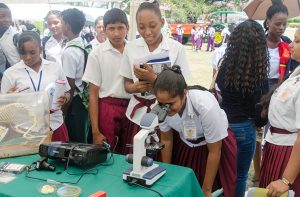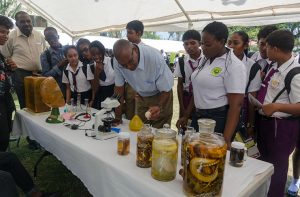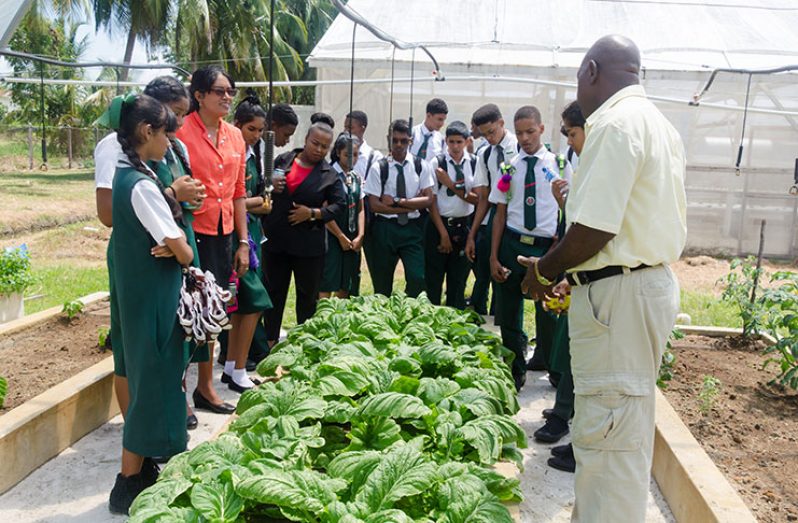THERE have been continued interceptions and quarantining of pest-carrying plants at ports of entry across the country, including at the Cheddi Jagan International Airport (CJIA) and the “carambola fruit fly” is one of several pests on the radar of the authorities.The National Plant Protection Department (NPPD) surveys the plants industry for pests. The NPPD, which is a department under the umbrella of the National Agricultural Research and Extension Institute (NAREI), has offices which operate at various ports of entry across the country, including the CJIA and the Eugene F Correia International Airport. The unit would seize and test various plants whenever persons attempt to move affected plants into the country.

Paul McWatt, who functions within the NPPD, told the Guyana Chronicle on Thursday during an Open Day event at NAREI’s compound, Mon Repos, East Coast Demerara, that the department would usually undertake interceptions at the CJIA.
He said it may be a cultural tradition of some persons who would attempt to move “a strange plant” into the country, but he noted those plants could in fact be the carriers of plant diseases. “Once we find they do not have permission from another country we quarantine the plants,” he said.
One of the main pests found here is the carambola fruit fly, a pest which causes worms to appear in fruits. McWatt explained that the host of the pest is the carambola plant; however, in the absence of that plant, the pest would be hosted in other fruit trees, such as cherry or guava.
He said the NPPD has undertaken surveys in all the regions across the country and according to him, only Regions Five and Nine are free of the pest.
The fruit fly affects mostly soft fruits if they are not controlled, McWatt said. He said the pest has the tendency of destroying an entire crop.
“Eventually, if we don’t do any control, the entire crop would be lost,” he added.
As regards physical presence of control, he explained that the NPPD personnel would visit the fields with detector traps; one such trap is called the “Jackson Trap,” a simple sticky surface which carries a wick.
The trap, which carries chemical mixes, would catch mainly male specie of the carambola fruit fly.
“The males would attract the females, so we would place it in the trap and so when they come they will stick and eventually fall,” he added.
Another method, he said, is called the male annihilation technique which involves the use of fibre-board blocks. The male species is targeted for elimination in that method.
McWatt said there are units all across the country which tests plants at the entry points. Two facilities are carded for Mahdia in Region Eight and Charity on the Essequibo Coast.
Meanwhile, the NPPD is undertaking surveys to determine the presence of several other pests across the country. The surveys include the presence of the red palm weevil pest, an insect which would normally affect the roots of the plants.

(Delano Williams photos)
The pest, which operates similarly to the coconut cockle, would usually lay its eggs in the plant’s roots and this leads to the pest destroying the root.
The pest contrasts with the red palm mite, a pest which lives under the leaves of the coconut plant.
The NPPD is also undertaking surveys to determine the presence of the Giant African snail, which was described as dangerous to plants as well as humans.
The pest has not been seen in Guyana; however, NAREI would undertake tests for the insect’s presence.
Several booths were on display at the Open Day which was attended by students from several secondary schools. A teacher attached to the LBI Secondary School told this publication that the exhibition was educational.



.jpg)








